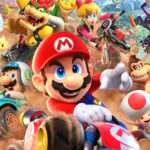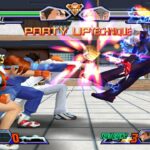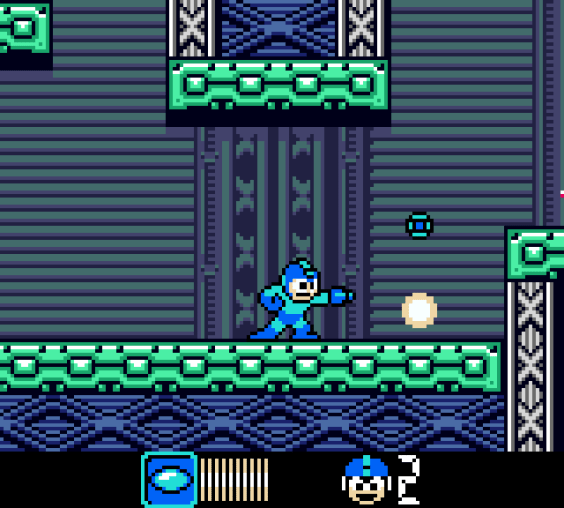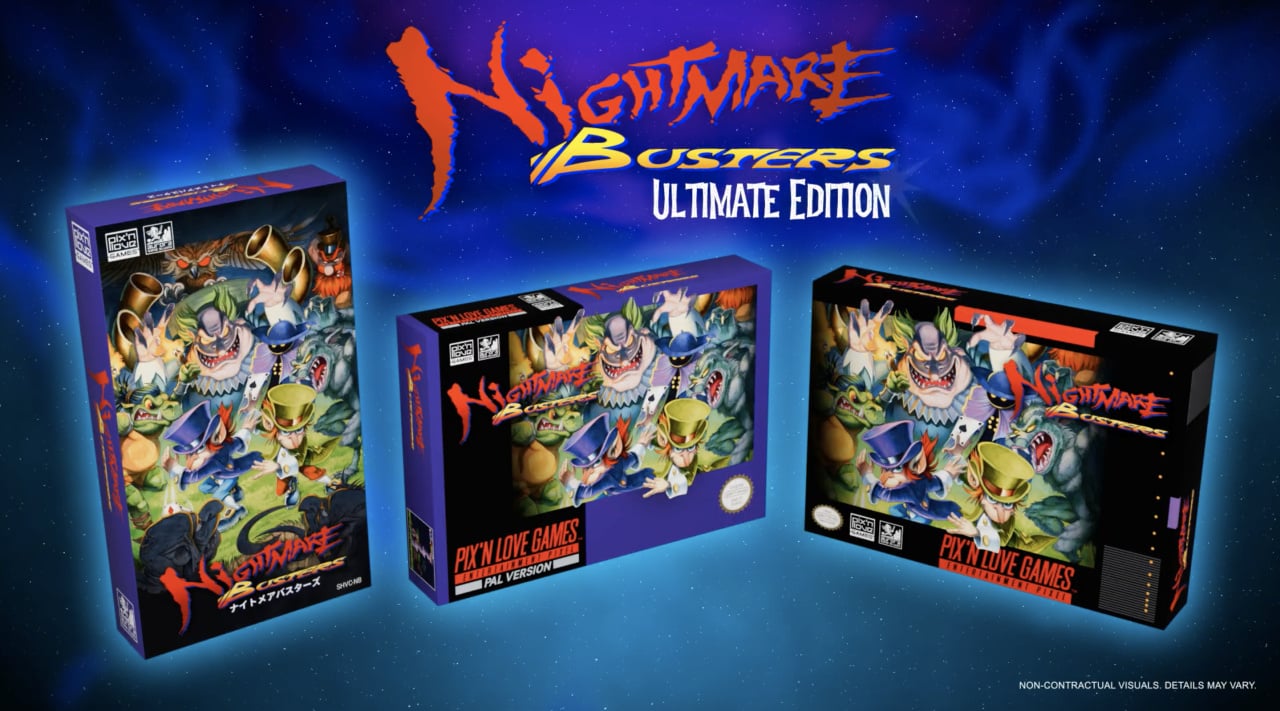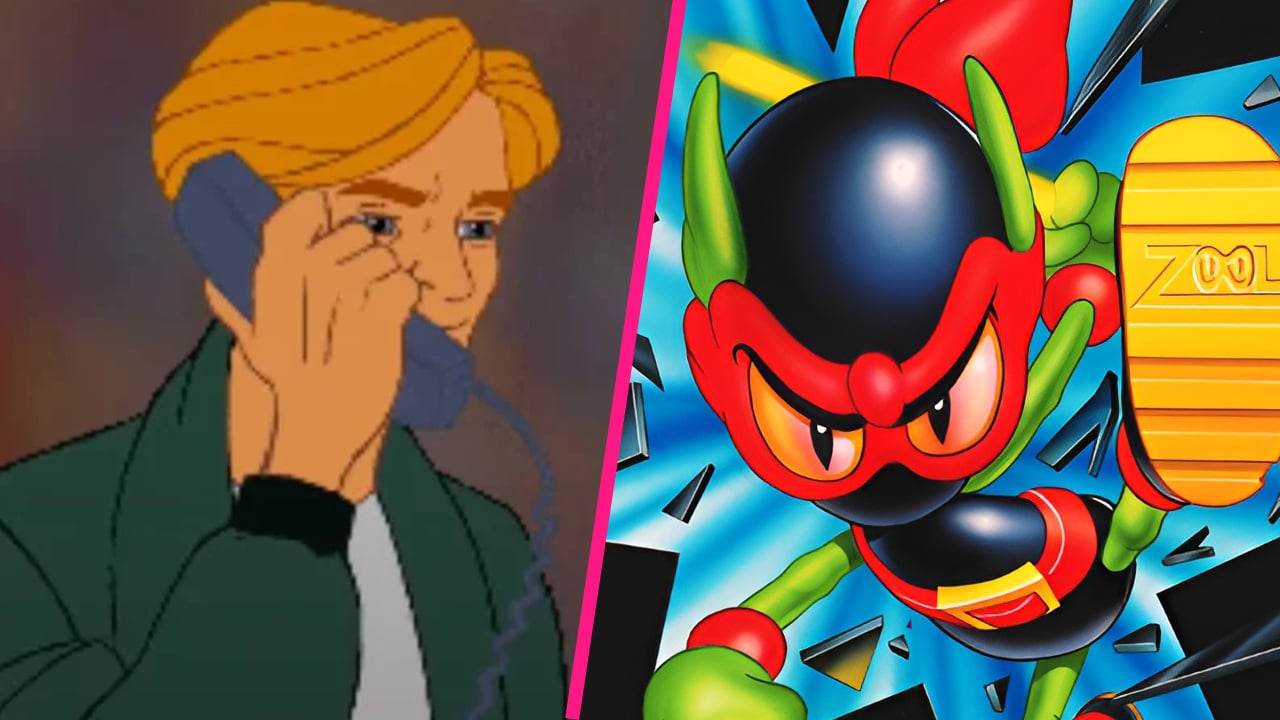Mega Man is a famous name in the gaming world, but not so well-known are some of his earliest games. Mega Man: Dr. Wily’s Revenge in 1991, or Rockman World, simply refurbished content from Mega Man 1 and 2. The next three Rockman World games did the same with sequential games in the NES series. But Rockman World V did something different, and that’s where our story really starts, and from here, I should let the Mega Man Mania team do the talking.
William Schwartz (WS): First, please introduce yourselves, and explain what the Mega Man Mania project is.
Andrew (A): My name is Andrew, I’m known online as SpecialAgentApe and in the romhacking scene I’m known for colorizations of Mega Man World 1 and 2 and Donkey Kong Land 1 and 2. I’ve contributed my hacks of the first two games to the project, which aims to collect all 5 Mega Man World titles into a single, complete package. Initially Marc and I worked independently, though obviously I knew of his and Kensu’s work as I worked on my own version of MMW1. The GB colorization community is actually a tight-knit group nowadays and most of us working on colorizations know and learn from each other.
Kensu (K): My name is Kensu William I’m known online as “kensuyjin33”; I’m a Pixel Artist and Mega Man fan. After having participated in several fan projects dedicated to the blue bomber, I met Marc in 2022 with whom we started this great project by coloring MMW5DX; at that time I thought our work on MMW5DX was enough work to retire, but then Andrew began coloring MMW1 and then 2, which inspired me until one day Marc came and suggested we color MMW3. At that time I didn’t think much of it until after a month we had it almost completely ready, and it then became inevitable to think that Mega Man Mania could become a reality.
Marc (M): M: I am Marc, known online as marc_max. I started developing for the Game Boy some years ago, but I quickly shifted to reverse engineering. I am deeply committed to video game history preservation. For me, that goes beyond just keeping copies of every game: I believe retro game translations and mods (like the DX ones we do) are also part of preservation, as they allow games to become more accessible and enjoyable for more people. I started doing small color restorations for GBA until I became amazed by the Super Mario Land DX hacks by toruzz, which inspired me to do my first colorization: Dr. Mario DX. After it was released, I started thinking about undertaking a much bigger project; I chose Mega Man V because I am a big fan of the blue bomber but also because it is a really good game that deserved a second chance. That allowed me to meet Kensu and Andrew. While I never had plans to colorize MMW games other than 5, after Andrew’s released his colorized MMW1 and MMW2 remasters, Kensu and I decided to complete the entire series and pay homage to the canceled Mega Man Mania GBA game with this project.
WS: As alluded to above, Rockman World V differs from the other games in the series significantly. Why did you start with Rockman World V?
A: Speaking as the person who colored the first two games, the Mega Man World series hasvery variable quality–the level design in the first game is rougher than most of the later entries and it’s not as well-received, while the second game is generally seen as flawed and incomplete. Mega Man World V is an entry that stands alongside and may even rival some of the best of the NES series.
K: If the core idea was to color a Mega Man game, the ideal candidate would be MMW5. Due to all the new features it brought to the table compared to the previous games, I think the decision was a very easy choice to make. If only one of the Game Boy games had to be colored, I think that one deserved to be 5.
M: I agree. While MMW1-3 aren’t bad games, MMW4 and MMW5 are truly top-notch quality. They had very good level design and, specifically, MMW5 is the only one that has unique and exclusive content: not only the enemies, but also the power and allies Mega Man gets, a shoot’em up level, an interesting story and an awesome final boss.
WS: At what point did you decide that you wanted to do color remakes of the other Rockman World games too and not just V?
A: When I was a young teenager, I remember using a tool called GB Colorizer. The tool is flawed, has many bugs, and doesn’t work on real hardware, but as a kid I found the ability to assign colors like that fascinating. The game I tried colorizing was Mega Man World 1, and I didnt get far. Now I’m an adult, and I know how to program myself, and what better use of my skills than to colorize… Donkey Kong Land 1 and 2? Well, actually, Mega Man World 1 was picked as a smaller project after I completed those two, and comparatively it was much less complex by a longshot. In all, I really only invested a couple months in the first Mega Man World.
K: Making MMW5 was really tiring, so Marc and I decided we wouldn’t color another Mega Man game. Then, Andrew came along and finished the first two entries and I thought “cool! looks like there’s only 2 left”. After that, one day Marc came along saying it would be relatively easy to paint MMW3. To be honest I didn’t believe him at first, considering MMW5 took over two years to finish. However, with all the progress we made during that time, the rest we had from taking a break, the motivation we got, and the tools we now had at our disposal, we managed to get MMW3 ready in almost a month, which made me feel committed to getting MMW4 colored as well.
M: Colorizing MMW5DX wasn’t exactly an easy process and while I loved to see the result and the fantastic reception of fans, I promised myself I wouldn’t colorize the rest of the games (laughs). A year and a half after MMW5DX release, Andrew had already released his colorized MMW1 and had announced MMW2. That long pause and the fact the first two games were already in good hands, allowed me to recover my motivation and decide to colorize MMW3 and MMW4. Also, MMW3 and MMW4 use the same engine as MMW5, so I had already done the hardest part. Kensu isn’t lying: we did MMW3DX in a month, though MMW4DX is going to take more time due to the amount of cutscenes.
WS: Was figuring out how to colorize the first four Rockman World games easier than Rockman World V? They did, after all, have clear color models on the NES.
A: For Mega Man World 1, I found the project initially difficult to decide colors for, as I felt that the process of creating new palettes for these familiar stage archetypes didn’t always display well on hardware or pigeonholed me into using less colors than what I had available. It also feels wrong to not give the game an identity of its own and just let it be the NES game again. However, fans have very strong opinions on how the series should look, and whether they like the creativity involved in colorization is a complicated question. I for example received criticism of some of Mega Man’s weapon colors in the first game, even though I took the direct NES color of the weapon in question! For the second game, the level designs are much more similar to their NES counterparts, which made letting that game stand out as its own entry a non-starter. I feel if I deviated too far in that entry, it would have felt inauthentic–overall I stuck to the original palettes for the second entry.
K: So far and compared to MMW5, coloring MMW3 and 4 is definitely turning out to be a much less complicated task. This is due in principle to the fact that Marc developed a tool that made things much easier when translating the artwork to programming. On the other hand, having the NES counterparts as a reference was a very useful starting point. It is necessary to clarify that when coloring MMW5–which does not have a counterpart on the NES–the starting point at the beginning was the limited palette of NES and from there the levels began to take shape. When it was MMW3’s turn and influenced by some of the choices made for 1 and 2, I took the liberty of playing a little more with the range of colors that the stages presented; giving the Snake Man stage a sky at dusk for example. But these choices were made without forgetting the style that Mega Man games demand. I must say that I had a lot of fun coloring MMW3.
M: Hacking MMW3 and MMW4 is relatively ‘easy’, but that’s because they use the same engine as MMW5 and that I had developed some custom tools for that game that can be reused in 3 and 4 and shorten the development times a lot. As of the artistic side, we believe the GB games are not the NES games. As Andrew said, some people complained because they didn’t look like the NES counterparts. In our opinion, these games are their own universe and do not necessarily need to look exactly like the NES games. Also, as we are working with the GBC which has twice the NES usable palettes and 32768 available colors, we feel like we need to make the most of the console’s color capabilities.
WS: Aside from just the colorizing, did you make any other changes to the Rockman World games in these hacks?
A: Mega Man World 1 is relatively untouched from the original entry aside from small flourishes like weapon colors. On the other hand, I went all out with improving the second entry, which is generally regarded as a weak entry in the series. I collaborated with a talented hacker/musician who goes by forple online and they remixed the entire soundtrack and all of the sound effects as the original game’s audio is generally regarded as harsh on the ears. However, I am a bit of a purist as far as preserving the original game goes, and so I was sure to make this feature a toggle that can be turned off and on easily. I also did many graphical improvements and added animations to bring the level of polish and quality closer to the standard of the rest of the series, and overall I feel for Mega Man World 2, the improvements are substantial in overhauling the experience.
K: I think Marc could give a lot more details about it, but in terms of art, I can say that simply applying color to a stage, a cutscene or a background is not enough to make it look good. In many cases, it was necessary to retouch several graphic elements, the most common reason being to take advantage of the color palettes to detail the backgrounds much more, change the lighting of some solids that abused the white to be seen on the monochrome screen of the Game Boy, and in a “worst” case scenario, removing details so that the colors can be properly applied within console limitations. I feel that it made the game feel part of the main saga, and in the end everything turned out well. Some of the creative liberties that came up during development were well received, such as modernizing the weapon demo screens, adding icons for weapons in the pause menu and of course the new stage for the final battle against Sunstar that looks incredible.
M: Yes. There are two common improvements in all five colorizations. The first one is the HUD and the pause menu: now they both show weapon icons, which is very cool. And then, there is the big change: the removal of slowdown. We have enabled the GBC double-speed mode (a mode that allows the processor to run faster) and with other tweaks to the engines, this allowed the games to run without any slowdown which that alone is a GREAT improvement. As of specific changes… In MMW3DX we fixed some wrong data the original game had in some hitboxes and even restored some animations that are coded in-game but never played because coders forgot to enable them. And MMW5DX had another big change which can be seen during the final boss stage. That original game’s stage background was bland and I hacked the game’s main loop to be able to edit it completely and add animations to it. It makes that final fight look epic!
WS: Overall, do these changes make the games easier or more difficult, or are they about the same?
A: Generally in my projects, I prefer to leave gameplay as-is in any way possible. However, there are some changes that naturally happen to the gameplay just from improved hardware. The Game Boy Color has a faster processor that significantly reduces lag, and the first Mega Man World is much more playable for that reason; however, the core gameplay as intended by the developers has been fully preserved.
K: I think it’s necessary to do some testing along the way. In the case of art, things like poorly calibrated saturation level and contrast on a background could make a level feel difficult for the player if they confuse the solids in the background. Things like that have happened in some video games in the past and it’s best to handle color choices with care if you’re going to colorize a game.
M: Oh! That reminds me, there was another change done in MMW3DX: the infamous Dust Man stage. I also prefer to leave the game as much vanilla as possible. However, in this case, we did two small changes in that stage because it’s known as one of the most punishing stages in the series. We just moved six blocks (that made a big difference!), and I’m glad everyone reacted positively to that change.
WS: Where do you see the Rockman World games in terms of Mega Man history? Did the Game Boy format force these games to play differently than their NES big brothers in any significant or subtle ways?
A: Mega Man’s physics in the NES entries are very rigidly defined and stay mostly the same among all of the NES titles. When you play a Mega Man game, you know how Mega Man will jump and slide. However, when the screen is lower resolution, the gameplay does need to be slowed down slightly in order to make sure the player is able to react to what is up ahead. Mega Man jumps differently, and shoots the buster differently, in these entries. It can take some getting used to when played alongside the other games, but overall it feels like Mega Man, and it’s fun like Mega Man.
K: I like to think that the World Series games take place in the middle of the events of the NES games, so there are no characters like Bass yet. As for the change in gameplay, I feel like it was very subtle. I spent a lot of time thinking that Mega Man on the Gameboy had the same physics as the NES when I played 5, until I had to do a comparison recreating the physics in GB Studio. I discovered that Mega Man jumps 3 tiles of 16×16 px high on the NES and only 2 on the Gameboy. With that all said, they did an excellent job porting Mega Man to the Game Boy.
M: Yes, the original MMW1 developers (Minakuchi Engineering) were aware of the console differences and tried to adapt the Mega Man experience to the smaller screen by making the character move slightly slower, changing gravity constants, etc. I think they went the correct route.
WS: What about gaming history as a whole? Many games from this time period had scaled down Game Boy versions. How do the Rockman World games compare?
A: When translating a game into a portable console entry, there are always compromises.Having colorized Donkey Kong Land 1 and 2, I can say their graphics are significantly pared down from their console counterparts in a manner dictated by the hardware. Mega Man, on the other hand, is being translated from an 8-bit 2BPP console to another 8-bit 2BPP console. Aside from simplifications to color, the World entries always felt like Mega Man games. I feel that their extremely close visual and gameplay style to their NES counterparts is part of what makes a colorization of them appealing; they’re like a hidden gem bonus series for those of the fanbase who have played everything else and still want more.
K:I think Mega Man could have taken the same path as other franchises and changed its visual style by making smaller sprites or something like that. The fact that it didn’t, respecting the sprite design that the series already was known for, makes it feel connected to the main games. I think that gives it great value as part of its history, but also it innovates by adding new music or new stages to make sure it’s not more of the same. The desire of the developers to differentiate each entry from its NES counterpart in some way is more noticeable as the entries go on, until their last installment which stands on its own. I think that as part of the history of Mega Man, it has fulfilled that objective, and the series deserves to be recognized independently as Mega Man Mania planned to do.
M: In my opinion, the portable Mega Man experience is greater than the average efforts to create Game Boy versions of other NES/SNES series. There were quite bad portable games back in the day, and Mega Man fortunately had luck on its side. We might criticize some odd level design decisions (like the Dust Man stage I mentioned), but overall, they play very well.
WS: There was also a brief trend to remaking Game Boy games with the improved Game Boy Color hardware in the late nineties. Many of these projects were abandonedincluding the original Mega Man Mania, which was premised as an official compilation/remake of the five Rockman World games for the Game Boy Advance. But when Capcom abandoned this project, so too did the Rockman World games fall from memory, having never been rereleased. Why do you think this happened?
A: From what I understand, they lost the source code and were rebuilding the GB titles onto GBA with limited info. That means they were working off of about the same level of knowledge of the games as we would be, likely with worse debuggers than exist now. Remaking 5 games in full color is a tall order even when you get money involved and pay an honest to goodness developer and not a fan doing it in the free time between their 9-5.
K: Maybe these games weren’t given the proper importance at the time, and that’s why the source code was neglected, or maybe it was all a pretext to gradually remove the franchise from the equation at that time of cancelled games, who knows. It’s unfortunate that things have happened this way but the important thing now is that there are many people who fondly embrace these games today and who after so many years recognize the value they have, thanks to this type of things the franchise is still present within the industry.
M: It is known that Mega Man sales weren’t very good back in the day. Capcom started to rush releases like MMX6, and quality went down considerably at that time (the Zero series were done by another company, fortunately). Other compilations, like the Anniversary Collection for PS2/GC/Xbox, were never released in Europe, and that’s because Capcom knew Mega Man had lost its ‘punch’ there. On the other hand, the Game Boy games never received their chance to shine; they were always overshadowed by the NES games, and that could also have been a reason to cancel the GBA compilation. We will probably never know the real reasons why Mania was canceled, (they say they lost the source code, but who knows…) but we can draw our own conclusions.
WS: Your most recent release in the series is Rockman World III- you’re only one game away now from doing what Capcom couldn’t. When do you expect to finish the colorized version of Rockman World IV?
A: I’m not very involved in the process for IV, but from what I understand, the main hurdle is the cutscenes of the game. In any GB colorization, it might surprise people to know that gameplay is generally the easiest part by a longshot. Marc and Kensu will share in-development screenshots that look complete, but just remember that two screens later is a buggy cutscene with no color yet. These things take time, but I promise it will be worth the wait and if the team says it’s not done yet, just trust they know what they’re talking about. I’ve had people ask to beta test my work, but they don’t realize that genuinely the project only feels presentable in the last 10% of completion.
K: As I mentioned before, coloring MMW3 turned out to be less complicated compared to 5 because MMW3 is a much simpler game. MMW4 contains more complex cinematics and scenes than the previous ones, so it will definitely take more work, and the thing is, despite the fact that I’ve been familiar with the franchise and its art since I was little, these last few years working on this great project I’ve continued learning things that end up contributing to the development. I still don’t know how the final result will turn out, but I promise to give my best so that the final product is more than pleasant for the fans who are waiting for this last game.
M: We had plans to have it done by 2025. Though we don’t want to raise expectations right now, there’s a chance it could be seen earlier than that as well. My part in hacking the game is almost done, but Kensu’s work in the art department will require a lot of effort due to the cutscenes. But there’s always hope for an earlier release!
WS: Will you be making a Mega Man Mania ROM for the Game Boy Advance? The legal area on this might be tricky- your colorization patches only modify ROMs, after all.
A: From what I understand, the plan is to require all 5 individual games before the patcher will put them together. So, it’s still just a patch. It’s just a patch that slaps other patches into one package.
K: We always try to stay on the line of what is right to do and what is not, that’s what this job entails, after all we do it only for the love of the franchise, and without profit, as a Megaman fan I’m just as excited to see this come true the right way.
M: We won’t release a ROM directly, as that would be illegal, of course. What we will release is a special patcher that will require the user to provide the five ROMs, then it will build the final Mega Man Mania ROM from them.
WS: Well, those are all the questions I have for you. Are there any questions I didn’t ask that you’d like to answer anyway?
A: Learning to colorize games is very rewarding but difficult and every change made is an active choice based on the hacker’s personal opinion. Mega Man fans, please understand that these versions are just one group of fan’s interpretation of how these games should be. Through limitations of the console or differences in opinion, it may not always be perfect, try as we might. That all said, I hope the effort I and my friends Marc and Kensu have made is something that shows the dedication of fans and that this collection will make fans happy. I don’t create my hacks for anyone but my own amusement and to build my own skills to be honest, but if I can contribute them to a big project like this one it makes me glad to be involved and among other talented fans.
K: It’s been a long road to get here, we still have work to do, but I must say that I have learned a lot and met incredible people, I thank all the people who value these projects, there is no better motivation than seeing someone enjoying something you have made with so much love, thank you Old School Gamer Magazine for giving us this space, I feel very happy with what Marc, Andrew and I are achieving with this project, I hope you all enjoy mmw4 and Megaman Mania when you are ready, greetings to everyone.
M: I don’t think I can add much to the beautiful words the rest of the Mania team said! Two years ago, I never thought the MMW5 colorization would grow into reviving the entire World series. All I can say is: thank you everyone. Fans of the blue bomber are really grateful with fanmade projects, and our DX remasters have received lots of positive feedback. I’ve even read on social media, some influencers and prominent figures in the video game industry are claiming that the MMWDX games are now the definitive ways to play the World series. That’s enough to know our time spent on these was worth the effort.
WS: Thank all you very much for your time. We’ll close off with this early still of Mega Man World 4 Colorized you’ve provided. We’re all looking forward to it!
The post A Roundtable Discussion on the Mega Man Mania Project appeared first on Old School Gamer Magazine.




